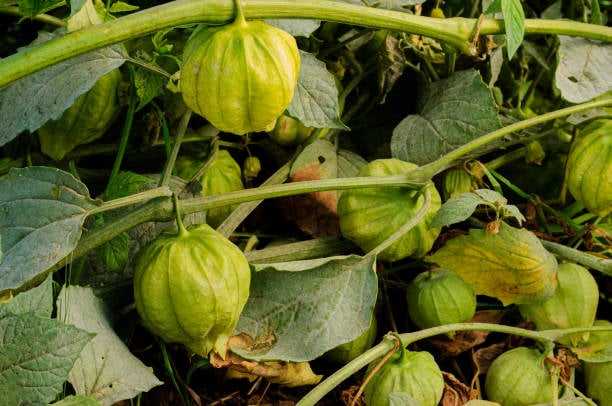Table of Contents
Small spherical and tasty – who doesn’t like a tomatillo? Almost everyone! What if we say you can grow a tomatillo plant in your garden? Interesting, isn’t it? In this comprehensive guide, you will learn how to grow a strong and plentiful tomatillo and take the best care of it.
Tomatillos are cousins of tomatoes. They taste and look somewhat similar. However, tomatillos are green in colour. Being from Mexico, tomatillos are a crucial component of many Mexican dishes, especially salsa.
If you plan to cultivate tomatillos in your yard – that is an excellent decision, as, during the harvesting season, you will have lots of them to eat and distribute among your friends and family. However, planting tomatillos in the UK comes with many prerequisites. Every process, from choosing the ideal place to harvesting tomatillos, should be done with extreme care.
So, let us look at a few things you must be aware of.
1. Choosing an Appropriate Location
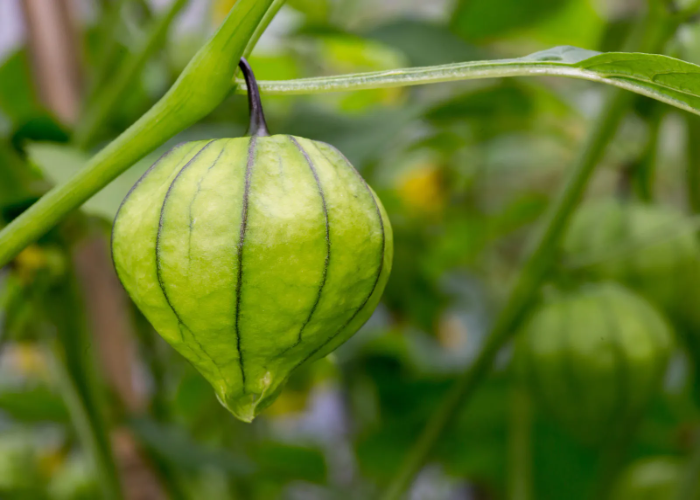
First and foremost, decide where you will be placing a tomatillo plant. Even if it is going to be in your outdoor space, ensure that the location receives at least six hours of sunshine daily since tomatillo plants love full sun.
Additionally, your chosen location should have excellent drainage because these plants require soil that drains well. Consider adding organic matter or compost to thick clay soil to aid drainage if you have it.
The area your select should be protected from strong winds as these plants are delicate and easily susceptible to damage. Remember, successful development and growth of the plant should be your ultimate goal.
2. Keeping The Soil Ready
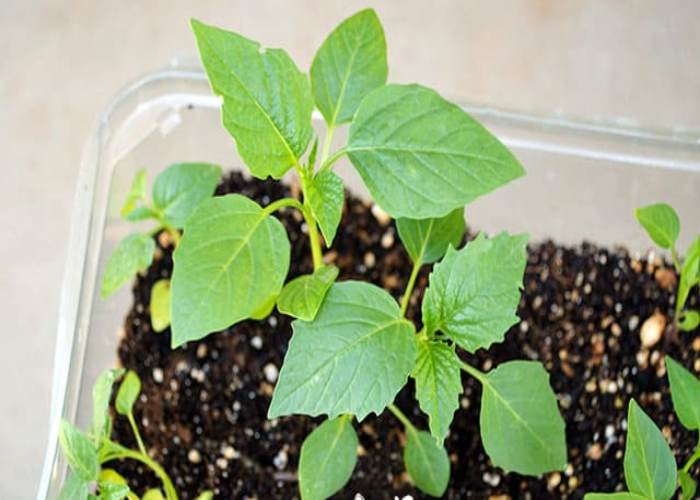
Tomatillo plants require healthy soil with a pH of 6.0 to 7.5. But how would you assess the pH value of the soil? Get a soil testing kit online or from your neighbourhood gardening centre to help you in this process. If you find that the pH value of your soil is low, consider adding lime to it, as it will help increase the pH value. On the contrary, high pH can be decreased by adding sulphur.
Once this is sorted, remove the weeds and debris from the soil and soften it with a tiller or garden fork. Soil preparation for tomatillo plants is essential as these plants in the UK may have robust roots and produces a larger crop.
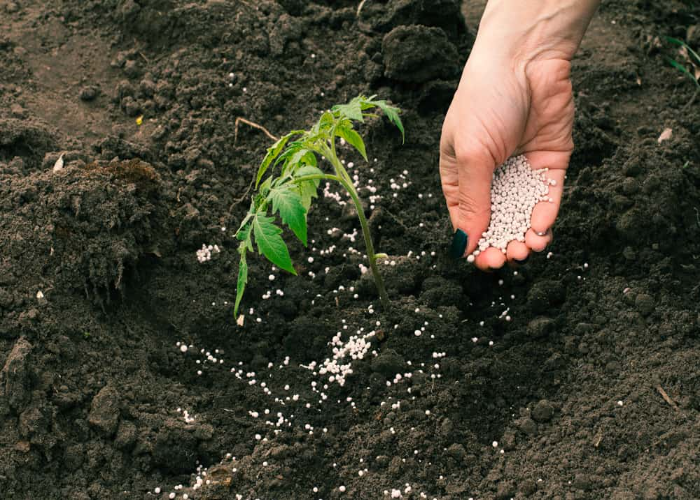
Soil fertilisation is a must to flourish a tomatillo plant in the UK. These plants consume a lot of food. Hence, they need nutrient-rich soil to grow well and set lots of fruits. It is where fertilisation comes into the picture. Enrich the soil with organic water before you plant the saplings. It will increase the fertility of the soil and increase its ability to retain rainwater.
Nitrogen-rich fertilisers can aid in fostering robust growth and leaf development when these plants mature. However, it is crucial to add over-fertilising because too much nitrogen can impede fruit production.
3. Selecting the Variety
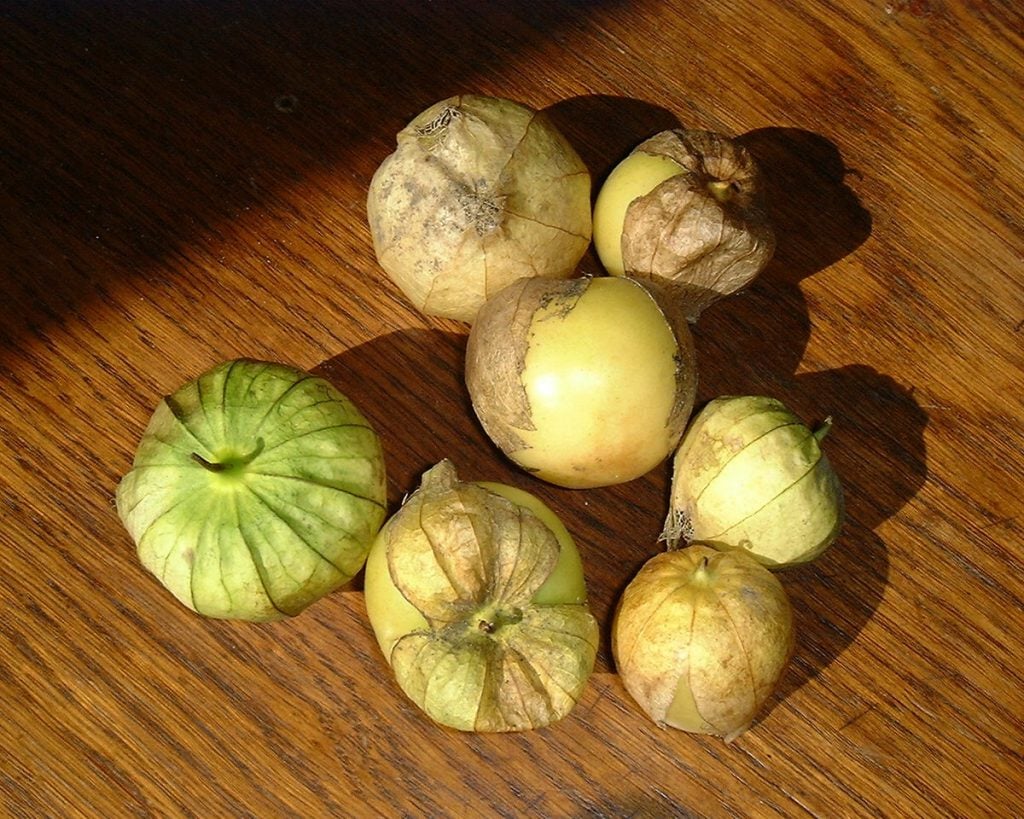
Once your soil and location are ready, it is time to buy tomatillo saplings or seeds. Since UK’s climate is slightly cooler and tomatillos love warm weather – choose a variety that can be bred to cooler temperatures.
Pay attention to the growth and size of your tomatillo habitat. It should be appropriate to fit in your outdoor spaces. Containers or pots would just be perfect as these plants are quite compact.
Your taste and culinary preference are other factors to consider when choosing the variety. Some tomatillos are slightly sweet, whereas some are citrus and tangy. So, make your choice accordingly.
Lastly, check for the availability of seeds and saplings in your nearby area. To confirm that the selected variant is available in the UK, check with nearby nurseries, reliable online stores, and seed catalogues.
4. Seed Starting and Transplanting
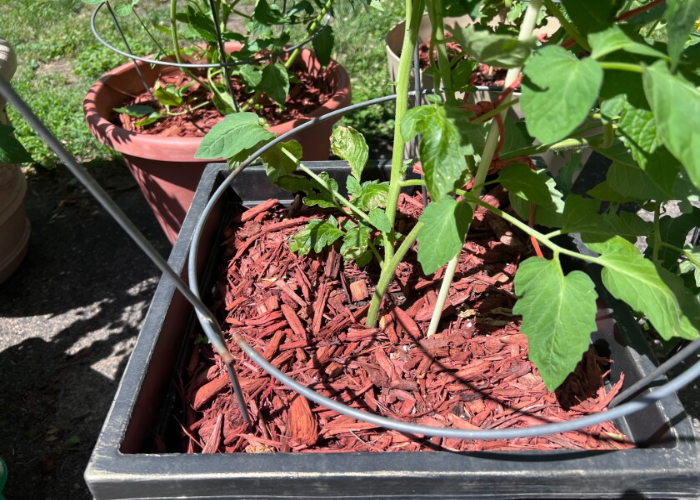
All varieties of tomatillo seeds follow the same growing process. Hence, you must begin prepping at least two months prior to the spring season to initiate the planting process. Whether you are planting in a lawn, seed trays or a pot, you should dig half an inch deep and sow the seeds in it. Cover them with high-quality well-drained soil. Now place the entire thing in an area that receives maximum sunlight and water it moderately.
You will notice germination after two weeks. In case you wish to move the newly germinated plant – this is the best time to do so. Above all, ample sunlight, frequent hydration, drained soil and free space should be taken care of.
5. Watering Tomatillo Plants
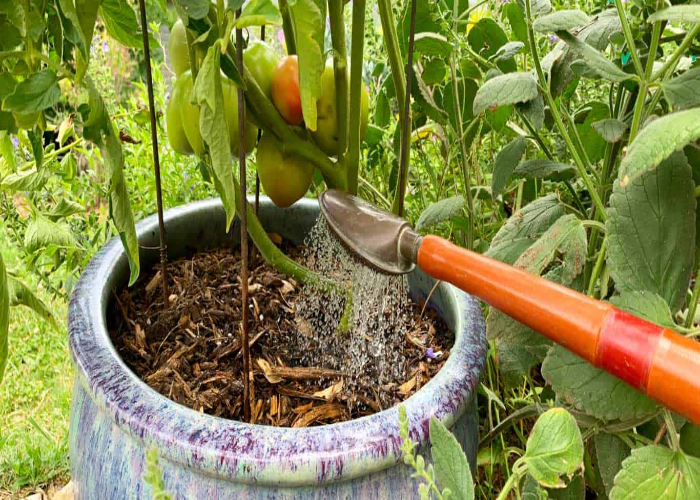
Tomatillos demand frequent and constant moisture when it comes to water in order to flourish. Although they are prone to overwatering, which can cause root rot – these plants prefer consistently moist soil.
Striking a balance by giving land enough water without flooding is crucial. Depending on the temperature and the amount of moisture in the soil, water these plants once a week in winter and twice a week in summer. However, keep an eye on the soil, as it should be wet and not soggy. Use a drip irrigation system for better results, as with this tool, the water will be sent directly to the roots while reducing foliar infections.
6. Mulching Process
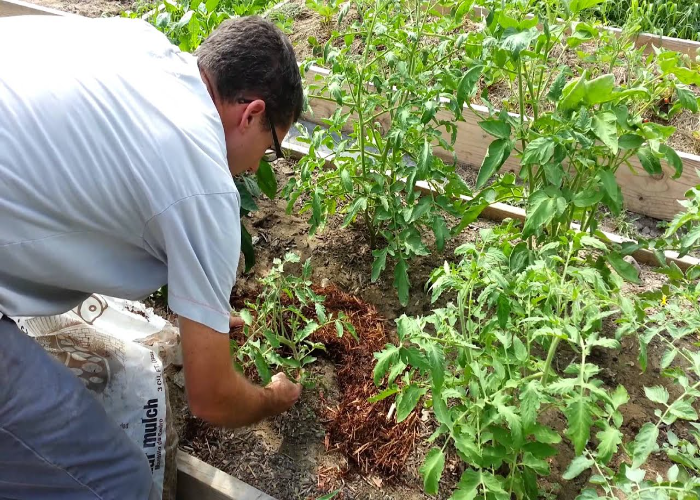
The mulching process is equally important as watering. It is a process of adding an organic layer of material to the soil. Straw, compost or chopped leaves works the best! This activity preserves soil moisture by lowering evaporation, particularly in dry and hot weather. Additionally, it aids in the suppression of weeds. Mulch also acts as an insulating layer, thereby shielding the roots from sharp climatic changes. In short, the mulch feeds the soil as it decomposes and enhances its fertility and structure. Increased fruit output, better development of the plant and improvement in the habitat of delicious tomatillos is a result of mulching.
7. Pruning and Shaping Tomatillo
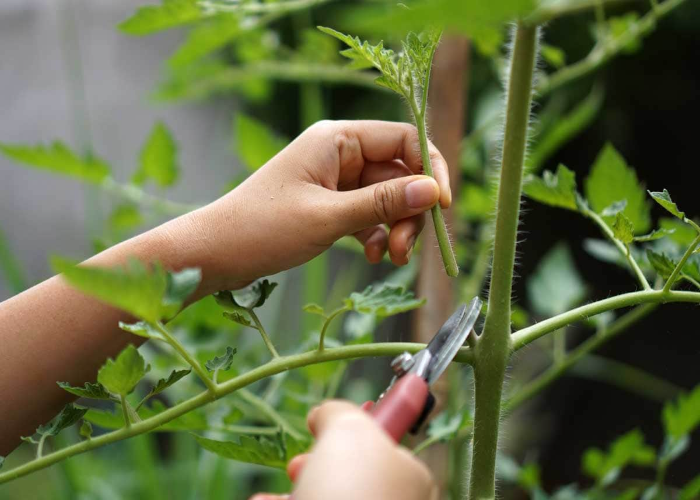
In order to promote healthy development and maximum fruit output, tomatillo plants must be pruned annually. When pruning, it is best to get rid of the suckers that grow from the main stem’s leaf axils. This aids in directing the plant’s energy into fruit growth, leading to bigger and more numerous tomatillos. It is also helpful to clip diseased or yellow leaves to preserve the general health of the plant.
Support is essential since tomatillos plants frequently grow sprawlingly. Trellises, cages and stakes can be used to assist in supporting the plants and keep them from toppling over under the weight of the fruit. Air circulation, illness risk reduction and harvesting are all facilitated by proper support and technique.
8. Disease Management In Tomatillo Plant
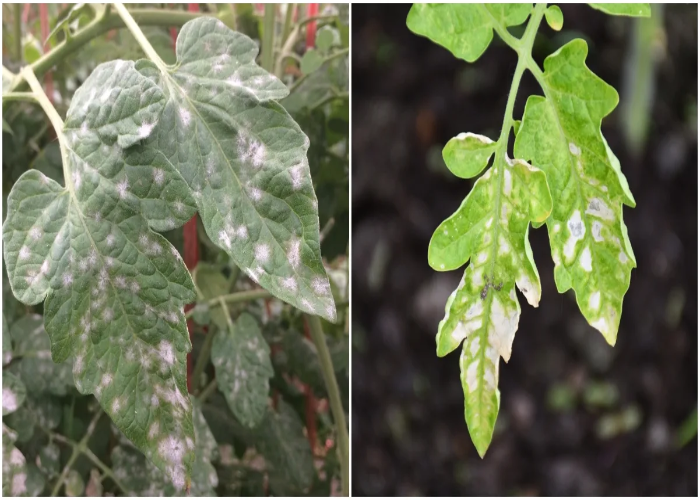
Disease control is a crucial step in maintaining the well-being of tomatillo plants in the UK. Since tomatillos are fruits, they are prone to several diseases. Efficient management techniques can help you get rid of diseases, if any. Also, it will aid in successful cultivation.
Prevention is the first step in this category. This involves choosing disease-resistant types wherever feasible and utilising seeds that have been confirmed to be free of disease. Pathogen spread can be reduced with proper sanitation and hygiene procedures.
On the other hand, better air circulation, sufficient space between plants and lower humidity levels are equally important as it lowers the risk of fungal infections.
The plants must be regularly monitored to spot early illness. Quick intervention is made possible by early detection of signs like wilting, leaf spots or irregular growth patterns. Employ integrated pest management tactics to target particular infections while minimising environmental damage. This includes the use of organic insecticides or biocontrol agents.
Another issue you may notice with tomatillo plants is early blight or powdery mildew. This condition can be controlled by using fungicides. However, follow directions and dosage recommendations on the label, as too much use of fungicides is also dangerous to the plant.
Sulpher sprays can also be utilised as natural substitutes. Stringent control measures must be put in place to eliminate insect vectors such as whiteflies and aphids.
Don’t stress the plants with too much soil, water, fertiliser and disease control methods, as it may spoil their foliage and health.
9. Harvesting Tomatillos
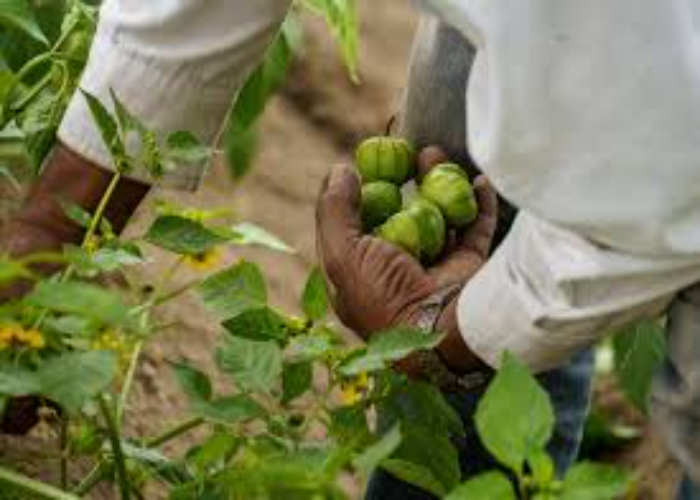
After following all the growing procedures, maintaining and caring for tomatillos plants- you will notice your tomatillos develop in some time. You will observe the husks of tomatillos expanding and changing colour from green to yellowish and purple hue as they grow. The papery husk gets thinner as well. This process usually takes place after 70 to 90 days of planting. When these fruits mature and get firm, you can gently twist or cut them off the plant.
10. Storing Fresh Tomatillos

To keep the quality and freshness of freshly harvested tomatillos, it is crucial to handle and store them properly. The tomatillos should first be cleaned of any dirt and should be wiped until dry. It is ideal for keeping these plants in a cool and dry environment as they may spoil in direct sunlight. Room temperature would just be fine if you intend to use the fruits within a few days.
You can even refrigerate tomatillos to increase their shelf life. Place these fruits in a permeable container, paper bag or plastic bag to allow airflow in the refrigerator. Your tomatillos will stay fresh for at least two weeks if stored properly. Keep a check on them every three days, and remove the damaged ones if you notice any.
Conclusion
To sum up, tomatillo plants are generally simple to establish and maintain. You may have a plentiful crop of tomatillos in your garden by choosing the best place, preparing the finest soil, sowing seeds and giving it frequent fertilisation and water. So, plant some tomatillo seeds today and begin experimenting with new dishes that include this delightful fruit. Growing tomatillos is an art! You will be happiest the moment you see yourself using a fresh juicy tomatillo grown by you.
All the hard work was worth it!
Frequently Asked Questions (FAQs)
Is the Uk Climate Appropriate for Growing Tomatillo Plants?
Yes, the UK climate is appropriate for tomatillos to grow. However, they are not cultivated as other fruits and veggies. As warm-weather plants that need a long growing season – tomatillos should be best started indoors in the early spring and moved outside once the frost has completely gone. In the UK, tomatillos may be successfully grown with the right care and attention.
Where Can I Buy Tomatillo Seeds in The Uk?
You can purchase good quality tomatillo seeds in the UK from a local gardener or an online store such as Amazon.
When Should I Begin Planting Tomatillo Seeds?
Tomatillo seeds should be sown in early spring, i.e. during February and March. The plants will have adequate time to develop and thrive as a result before being moved outside and additionally, starting the seeds inside aids in creating a warm environment necessary for germination.
When May I Move Indoor-Grown Tomatillos Seedlings Outside?
Tomatillo seedlings can be transferred outside when the ground is warmed enough after winter. May or June would just be ideal for this. However, you should also keep in mind the location and select the best one before you move indoor-grown tomatillos seedlings outside.

